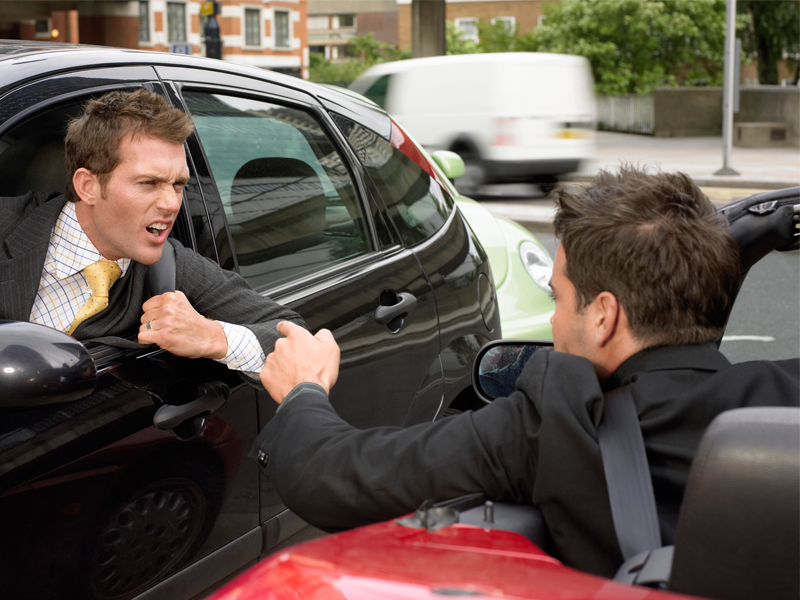If you’ve spent any time on our local highways and busy streets, you’ve most likely been annoyed with the occupants of the vehicles streaming past you, or frustrated with those standing still in a long line ahead of you. You may have also noticed your chest tightening and your knuckles turning white from your fingernails digging into the steering wheel. And, if you’re like me, you may have on more than one occasion heard the famous line from the philosopher Sartre in your head, “Hell is other people,” with the added, “and none of them know how to drive.”
With alarming regularity, these thoughts often leak out and become words and gestures. When the anger switch is turned on, and the rationality switch turned off, we end up with the drama known as road rage. So common is our contact with angry drivers that a recent AAA Foundation survey found that eight out of 10 drivers rank aggressive driving as a “serious” or “extremely serious” risk that jeopardizes their safety.
Who are these folks who see their vehicles as a means for delivering their tension to a road-weary world? Is road rage a psychological condition or a symptom of a culture desperately in need of a rest stop? Finally, is there anything we can do to protect ourselves from having our own vehicular temper tantrums?
One of the common psychological explanations for road rage is that the driver suffers from intermittent explosive disorder, or IED. IED is characterized by explosive outbursts of anger that are disproportionate to whatever is happening. This disorder has a lot in common with the military IED (improvised explosive device) in that you never know when you might run into one and the damage can be quite extensive.
While there are surely ticking time bombs cruising our highways, IED cannot explain why a growing number of sane and rational people get behind the wheel and experience emotional meltdowns. It’s more likely that many people are buckling up for a daily ride into the eye of a perfect stress storm without carrying their emotional repair kits with them. The average daily commute has us sitting strapped into a small space with these known stressors as our passengers: lack of control, excessive worry, being late and multi-tasking—all potential life-threatening circumstances.
Add the fact that both adrenaline and the stress hormone cortisol are cruising through our neuropathways, and it’s no wonder that sanity is often the first thing thrown out the window.
If stress is what fuels road rage, what is needed is an emotional/mental tuneup to make sure that we’re not heading for a nervous breakdown. In the absence of having devices installed in vehicles that require drivers to pass sanity tests before heading out, we’re going to have to grab the wheel and take responsibility for ourselves.
Here are some pointers to check on your inner state before hitting the Interstate:
1. Don’t drive angry: Check your personal temperature gauge before starting. If it’s in the red, take a moment to breathe and relax your body.
2. Check the pressure: How much stress is in your life currently? If you’re over-inflated you run the risk of a blowout. You might want to make your next destination a therapist’s office.
3. Switch to alternate fuel sources: Super-charged energy drinks may make you feel like a “go-getter” on the job, but in the car you run the risk of becoming the hyperactive child stuffed into his desk seat while the teacher pleads with him to sit still. You’re just turbo-charging your stress response.
4. Turn on your GPS (Generating Positive States): Monitor the negative traffic in your head and replace it with a personal mantra that steers you toward your “Happy Place.”
5. Join AAA: Pay Attention to what you’re doing, be Aware of others and Accept that the real meaning of life is the journey not the destination.
6. Fill ‘er up: Go ahead and turn you vehicle into a sacred space. Put calming music on, place meaningful mementos on your dashboard; fill it with relaxing aromas. You just might find everyone wanting to carpool with you.
7. Put on the brakes: Before getting out of your car to confront another driver, take a break from the movie in your head, which has you starring as the road warrior out for justice, and replace it with the scene where you have to explain to the judge why jail time will be bad for your career.
While there will always be times when rage strikes on the roadways—let’s face it, even angry people need to get places—we can make our local streets safer and saner. If everyone who gets behind the wheel remembers the first golden rule of safe driving, “Drive around others the way you would have others drive around you,” we may not only arrive in one piece, but with peace of mind as well.

